Following a calm morning, we continued through the gorge. The river and the road gradually deviated until the former receded into an invisible abyss off the brink of the latter.
Then we stopped for coffee and brunch at a lone restaurant we happened upon. It comprised a shaded concrete terrace over the cliff and an outdoor kitchen. Unlike yesterday’s one, it had set tables and a full crew of staff on standby. They had a big feast reserved for later, but now we were the only customers.

A little further, we took a detour to visit a monastery situated partway up the cliff. Established at an uncertain, remote date, the Qannoubine Monastery is one of the most important centers of Lebanon’s monastic tradition. A timeworn church with faded frescoes and the cells were cramped within a recess on the cliff’s face, and a narrow platform in front of them upheld a few more structures overlooking the wilderness. The only people on the scene were a tourist group who arrived on a pickup truck and one monk who managed the monastery’s gift shop.
This story is an excerpt from my book "Backpacking Lebanon", wherein I recount my one-month journey around this fascinating country. Check it out if you like what you're reading.
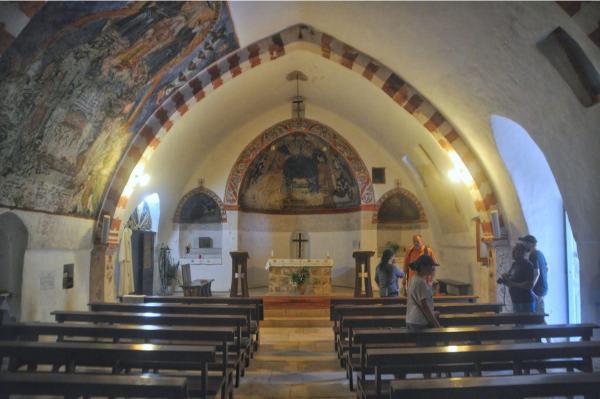
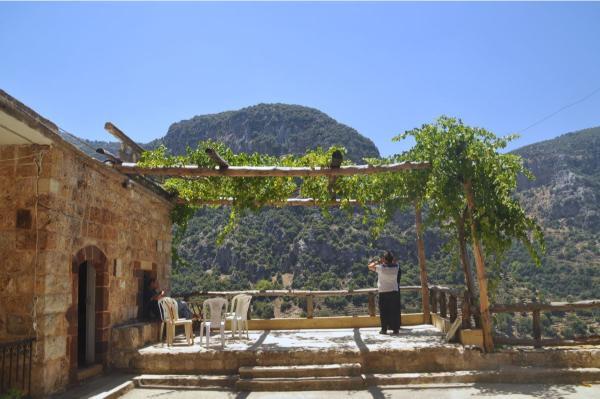
We got back down to the road and followed it until it gave way to a coarse trail. A bunch of ruins inside the gorge, possibly a former monastery or fort, were the only artificial feature we saw for some time.
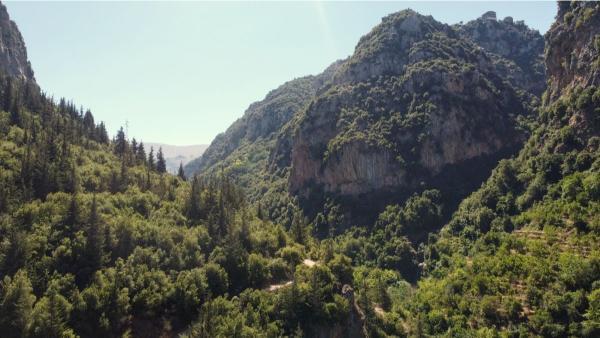
Early afternoon, we reached a rudimentary village called Fradis, by the intersection of the Qadisha gorge with another gorge coming from the east. Before heading that way, we settled in a shade to wait out the peak heat. One thing I observed in this village was that, despite its negligible size, it hosted many livestock animals; their broad absence, in such a rustic environment, was something that had puzzled me throughout this trip.
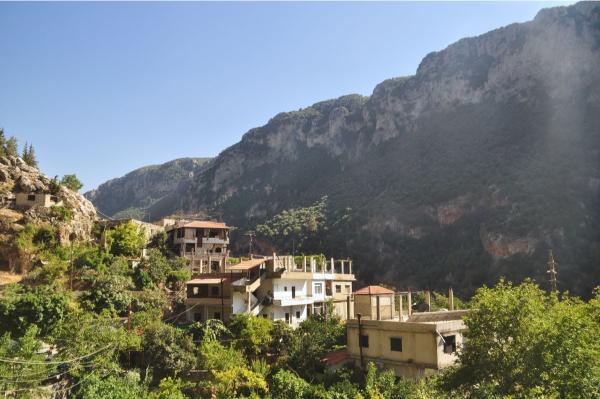
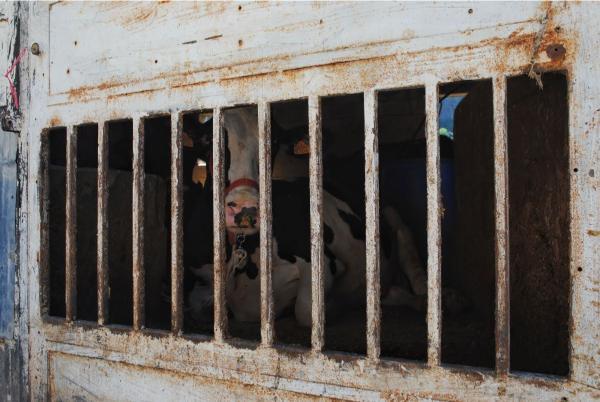
When the sun’s angle became tolerable, we proceeded along a trail that rounded the protrusion of the mountain to usher us into the new gorge. Our plan was to camp at the first opportune spot by the river. Upon reaching the bottom, however, instead of a river, we found a bone-dry riverbed. And once again, we had to carry on walking, thirsty and fatigued, into the late afternoon.
We progressed through the gorge until we stood below another monastery nestled on the cliff. There was a bridge crossing to the other side, a smooth path starting from the bridge and continuing along the opposite bank, and a sign prohibiting the use of the path. There was nothing like a fence that could physically hinder us from taking it. But to err on the side of caution, we complied and stayed on the craggy trail that ascended the cliff on the bank we were at.
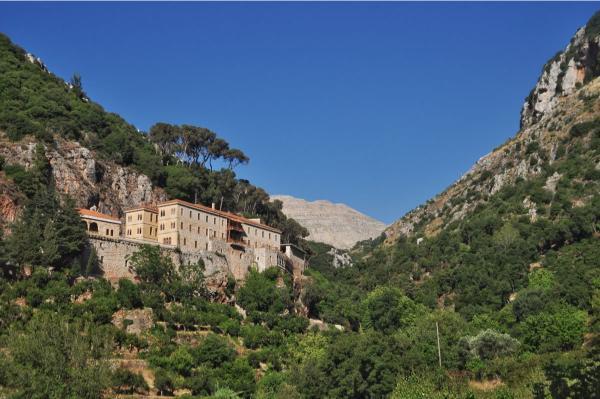
We soon went past an enclosed reservoir that collected the gorge’s water and distributed it to irrigation pipes, which was the culprit for the downstream dryness. Upstream, the river gurgled mellowly but was too far down the perpendicular cliffs to access. We had to endure a little longer until the next crossing.
As we began to reapproach the river, we realized we couldn’t drink from it. We could smell it from afar. It stank and frothed like a sewer because it actually served as the sewage of Ehden town above. Barring water poisoning, our only option was to continue up the acutely steep trail until the town.
The sunset found us at the edge of the cliff, walking through the town’s outskirts. Some more climbing along winding paths and stairways later, we reached the main road at dusk. A wide sidewalk ran alongside it and held a single bench, looking out on a marvelous mountainous vista that covered the entire distance we’d traveled over the past four days. Sophie waited there with our bags as I dragged my aching feet to the nearest shop.
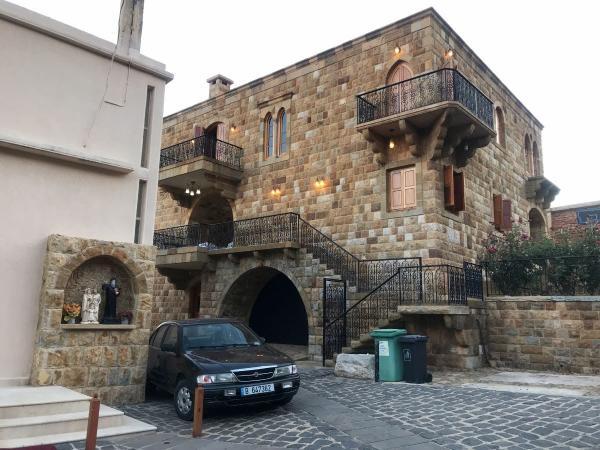
I returned with several bottles of water, juice, and ice-cream. We enjoyed them while gazing at a myriad twinkles switching on throughout the firmament and the wide scenery.
The question of where to sleep remained. There was a suitable flat patch on the slope in front of the bench, but great though the view was, it came with its downsides. For one, the place was full of rubbish. Yet worse, the sidewalk was bustling with pedestrians, and we’d make a spectacle.
Whatever, considering our exhaustion and the darkness, we went for it. While dining inside the tent, we kept hearing the curious chattering of halting passers-by. And later in the night—as Sophie said in the morning—there was a rambunctious group of drunk or too-merry people sitting on the bench for hours, but I was dead asleep then.
Photos
View (and if you want use) all my photographs from Qadisha Valley.
Accommodation and Activities in Lebanon
Affiliation disclosure: By purchasing goods or services via the links contained in this post, I may be earning a small commission from the seller's profit, without you being charged any extra penny. You will be thus greatly helping me to maintain and keep enriching this website. Thanks!
Stay22 is a handy tool that lets you search for and compare stays and experiences across multiple platforms on the same neat, interactive map. Hover over the listings to see the details. Click on the top-right settings icon to adjust your preferences; switch between hotels, experiences, or restaurants; and activate clever map overlays displaying information like transit lines or concentrations of sights. Click on the Show List button for the listings to appear in a list format. Booking via this map, I will be earning a small cut of the platform's profit without you being charged any extra penny. You will be thus greatly helping me to maintain and keep enriching this website. Thanks!
